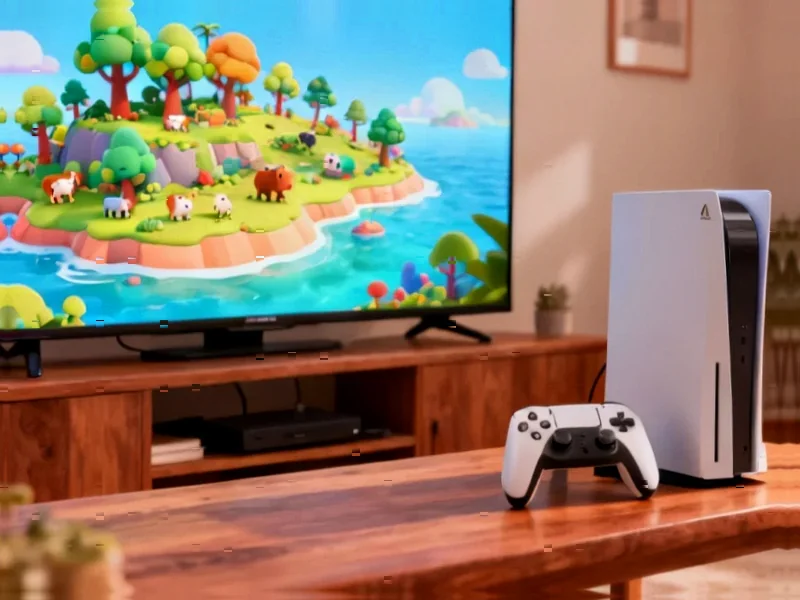According to Forbes, Nintendo’s latest financial results reveal the Switch 2 has sold 10.36 million hardware units since launch, with Mario Kart World achieving an impressive 9.57 million sales representing a 93% attach rate. Donkey Kong Bananza also performed well with 3.49 million units sold, contributing to total Switch 2 software sales of 20.62 million units. However, the original Switch managed 61.57 million software sales during the same period, demonstrating that Nintendo’s biggest current competitor is its own previous console. The analysis suggests this creates a more challenging upgrade path than during the 3DS to Switch transition.
The Unprecedented Generational Transition Challenge
What we’re witnessing here is fundamentally different from any previous console transition in Nintendo’s history. When the original Switch launched in 2017, it was replacing the 3DS – a system with different target demographics, game libraries, and hardware capabilities. The Switch represented a clear upgrade path. Today, Nintendo faces the unique challenge of convincing existing Switch owners to upgrade to what essentially amounts to an enhanced version of the same ecosystem. The installed base of over 140 million Switch owners represents both Nintendo’s greatest asset and its most significant obstacle to Switch 2 adoption.
The Software Sales Reality Check
The software numbers from Nintendo’s financial results reveal a critical insight: while the Switch 2 has impressive attach rates for its flagship titles, the overall software ecosystem hasn’t fully transitioned. The original Switch’s 61.57 million software sales during the same period indicate that developers and consumers are still heavily invested in the previous generation. This creates a chicken-and-egg problem where developers may hesitate to create Switch 2-exclusive content until the installed base grows, while consumers wait for compelling exclusive software before upgrading.
The Pricing and Value Proposition Dilemma
Nintendo’s current hardware lineup creates a complex pricing strategy challenge. With the Switch Lite positioned as an affordable entry point and the original Switch still widely available, the Switch 2’s premium pricing creates friction for families and casual gamers. Unlike the PlayStation or Xbox ecosystems where backward compatibility is expected, Nintendo has historically treated each generation as a fresh start. The Switch 2’s position as an iterative upgrade rather than a revolutionary new platform makes the value proposition harder to justify, especially with the reported price increase for Switch 2 games.
Corporate Culture and Innovation Concerns
The analysis raises valid concerns about Nintendo’s post-Iwata corporate direction. Under Satoru Iwata, Nintendo embraced what he called “lateral thinking with withered technology” – finding innovative ways to use established technology rather than chasing cutting-edge specs. The Switch was indeed a risky bet that paid off spectacularly. The current challenge is whether Nintendo has become more risk-averse, focusing on incremental improvements rather than groundbreaking innovation. The Switch 2’s positioning as an upgraded Switch rather than a completely new concept suggests a more conservative approach that may struggle to convince existing Switch owners to upgrade.
Long-Term Market Implications
This situation creates significant strategic challenges for Nintendo’s future. If the Switch 2 cannot achieve software sales parity with its predecessor, we could see a bifurcated market where major third-party publishers continue supporting the original Switch while reserving Switch 2 development for enhanced ports. This would mirror the situation we saw with the PlayStation 4 and PlayStation 5 during their overlapping lifecycle, but with the added complexity of both platforms sharing the same core concept and game library. Nintendo may need to accelerate the sunsetting of original Switch support to drive Switch 2 adoption, but doing so risks alienating their massive existing user base.
The Changing Competitive Landscape
While Nintendo has traditionally operated in its own market space, the success of handheld PC gaming devices like the Steam Deck and the emergence of cloud gaming services create new competitive pressures. The original Switch’s aging hardware already struggles with many third-party titles, but the Switch 2 faces expectations to compete with more powerful portable devices. Nintendo’s strength has always been in exclusive first-party content, but if the Switch 2 cannot establish a strong software ecosystem quickly, it may find itself competing for developer attention in an increasingly crowded portable gaming market.




